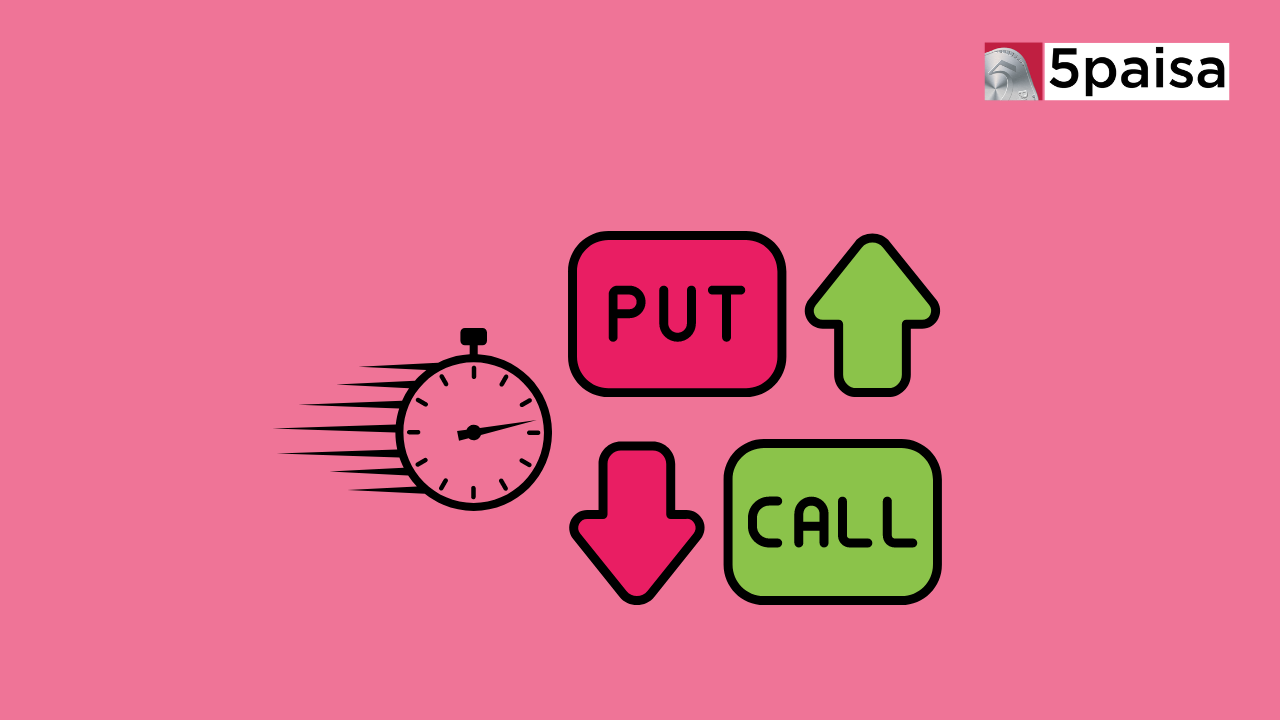Best Option Selling Strategies

Last Updated: 13th September 2023 - 10:31 am
Are you ready to take your trading game to the next level? Look no further than option selling strategies! With covered calls, cash-secured puts, iron condors, and credit spreads in your arsenal, you'll be a force to be reckoned with in any market condition. But beware, success requires a deep understanding of the underlying asset, market trends, and associated risks. So, gear up and get ready to sell your way to the top with the best option selling strategies!
Scroll down to learn more.
What are Options Selling Strategy?
The concept of options selling strategy involves measuring the advantages and disadvantages of different trading strategies and then making an informed and smart decision. Options selling strategy refers to a type of trading strategy where an investor sells options contracts rather than buying them. The options contracts being sold can be either call options or put options. This strategy involves purchasing one put with the optimism of benefiting from the decline of an underlying asset.
Best Option Selling Strategies That Every Trader Should Know
The stock market is getting tougher every day, and surfing through the best options is a daunting yet crucial task. The option selling strategies can be diversified into four categories - bullish, neutral, Intraday, and bearish. Every trader should be aware of these four types of trading options and be familiar with their technical know-how. Read on to find out more about the best option trading strategies that every trader should know about. Although the decision to choose any one of these strategies depends upon the trading style, it is still advisable to be familiar with how they are carried out to be a more efficient trader.
Bullish Option Trading Strategies
Listed below are the strategies that come under bullish options trading:
1) Bull Call Spread
Under this type of options trading, the trader buys an ATM (At-the-money) call option and sells the Out-of-the-money option. The lower strike call option is considered to be "in the money" (ITM), which means that its strike price is below the current market price of the underlying stock. The higher strike call option is considered to be "out of the money" (OTM), which means that its strike price is above the current market price of the underlying stock. Under a bull call spread, the profit is directly related to the cost of the underlying stock; if the cost increases, then the trader gains from the same. When an investor believes that the stock's price won't increase significantly anytime soon, he uses this vertical strategy.
2) Bull Put Spread
The bull put spread strategy is put into use when the trader feels that the value of the underlying asset will increase in the near future. Therefore, to put it simply, this spread entails selling a put option and purchasing a put option with a lower strike. Although it is similar to a bull call spread, in this strategy, a trader buys one out of the money and sells 1 at the money put option.
3) Bull Call Ratio Backspread
The bull call ratio backspread is a complex options trading strategy that involves buying a number of call options at a lower strike price and selling a greater number of call options at a higher strike price. The strategy is designed to take advantage of a bullish market outlook while limiting the downside risk. Under this type of trading, when the market goes up, the traders can make unlimited amounts of profits.
4) Synthetic Call
If you are looking for an option selling strategy that has unlimited profits with limited risks, then the synthetic call strategy is the best way to go. As part of this strategy, the trader purchase put options on the stock that they are holding and which they think will rise in the future. It has been said that investors can compare this strategy to an insurance policy against a sharp decline in the stock price.
Bearish Option Trading Strategies
Listed below are the strategies that come under bearish options trading:
1) Bear Call Spread
Under this strategy, the trader buys a single one out of the money call option and sells a single ITM call option. When the price of the stocks falls, the trader makes a profit. A bear call spread is an options trading strategy that involves selling a call option at a lower strike price while simultaneously buying a call option at a higher strike price. The strategy is designed to take advantage of a bearish market outlook while limiting potential losses.
2) Bear Put Spread
Much similar to the bull call spread, this strategy is easy to carry out. This strategy is preferred by traders when they expect the market to go down by a significant amount. It involves the purchase of the ITM put option and selling the out-of-the-money put option.
3) Strip
Under this strategy, the trader buys two lots of at-the-money and at-the-time call options. When the cost of the underlying stock makes a strong upward or downward movement, the trader makes a profit. In general, the trader earns a profit when the cost decreases.
4) Synthetic Put
Traders carry out the synthetic put strategy under bearish option trading strategies when they are concerned or curious about an up-and-coming near-term strength in that particular stock. Also called the synthetic long put, the trader profits from this when the underlying stock price declines. In a nutshell, it's a tactic that investors can employ if they have a bearish bet on a stock but are concerned about that stock's potential for near-term strength.
Neutral Option Trading Strategies
Listed below are the strategies that come under neutral options trading:
1) Long Straddles & Short Straddles
Considered as one of the most simple and easy-to-implement market strategies, the straddles involve buying the ATM call and Put options. It is necessary to keep in mind that both the options should have the same expiry, same strike, and same underlying. A long straddle is a strategy where an investor buys both a call option and a put option on the same underlying asset at the same strike price and expiration date. This strategy is used when the investor believes that the underlying asset will experience a significant price movement but is unsure of the direction of the movement.
A short straddle is the opposite of a long straddle, where an investor sells both a call option and a put option on the same underlying asset at the same strike price and expiration date. This strategy is used when the investor believes that the underlying asset's price will remain stable and that there will be minimal price movement. The short straddle profits if the underlying asset's price remains between the strike prices of the call and put options, generating a profit from the premiums collected.
2) Long Strangles & Short Strangles
Also called a Buy or option strangle, this strategy of neutral options trading involves the purchase of OTM put and call options underlying the expiry date and asset. A long strangle involves a trader to purchase both a put and call option. This is carried out when the trader is sure that the underlying asset will go through a significant price movement but is unsure of the direction of that movement. The trader profits under this type of strategy when the price of the underlying asset moves in either direction and covers the cost of the premium option.
The opposite of a long strangle, i.e., a short strangle, involves the trader to sell both a put and call option underlying the same asset, expiry date but different strike. This strategy is preferred by the trader when they believe the cost of the underlying stock will remain stable within a certain range. The short strangle profits if the underlying asset's price remains between the strike prices of the call and put options, generating a profit from the premiums collected.
Intraday Options Trading Strategies
Listed below are the strategies that come under Intraday options trading:
1) Momentum Strategy
Under this type of strategy, as the name suggests, the purpose is to carry out most of the momentum in the market. This strategy involves keeping track of the stocks in the market before a change. As per this change, the traders make a decision to purchase or sell securities. Pertaining to this, the traders that deal with the momentum strategy need to stay up to date about the news and any happening regarding the stocks that are on their target. Many external factors influence the price of the stock, and thus, intraday traders should be updated about these fluctuations to make smart and informed decisions.
The momentum strategy is based on the principle of trend-following, which assumes that market trends persist over time. This means that if a security is rising in price, it is likely to continue to rise, and if a security is falling in price, it is likely to continue to fall.
2) Breakout Strategy
Timing is an important factor when it comes to purchasing and selling securities on the same day. The breakout strategy under intraday option selling involves the identification and gaining profit from significant price movements in security when it breaks through a key level of support or resistance. This strategy is based on the idea that when security breaks out of a trading range, it will continue to move in the same direction as the breakout, resulting in a profitable trade.
The breakout strategy is generally used for monitoring various trading opportunities by identifying key levels of support and resistance.
3) Reversal Strategy
This strategy is for those who are willing to take a high risk. The reversal strategy is carried out against the market trends and is solely based on calculations and analysis. To efficiently move forward with this strategy, the traders need to have in-depth and extensive knowledge and be familiar with the ins and outs of the market.
4) Scalping Strategy
The scalping strategy involves benefiting from even the slightest change in price. It means making a high profit from small profits. Mostly, traders who invest in commodities opt for the scalping strategy. It is advisable that the traders choosing this strategy should look for shares that are not only liquid but also volatile.
5) Moving Average Crossover Strategy
Under this type of strategy, when the cost of any stock goes above or below the average amount, there is a change in momentum. When the cost of the share rises above average, it is known as an uptrend; when the price falls below the average, it is called a downtrend. In case of an uptrend, it is advisable to buy stocks, and in case of a downtrend, experts recommend selling shares.
6) Gap and Go Strategy
As the name of the strategy goes, it means finding the gap and filling it. This strategy involves finding the gaps in the pricing of the previous day’s closing price and the current day's opening price and then entering a trade in the direction of the gap.
Conclusion
The above-mentioned guide to the best option selling strategies will surely help you ace your trading game and make the most profits. However, it is necessary that you are well-versed with the market conditions and be familiar with the technical jargon in order to make an informed trade.
FAQs on Options Selling Strategy
Q: Is selling options better than buying?
Ans: Both selling and buying options have their own set of pros and cons; the ultimate decision between the two depends upon the preference of the trader. A buying option may be better for a trader looking to invest in limited risk, and a selling option may be preferential for those who seek lower costs.
Q: Which option selling strategy is best for intraday?
Ans: The best selling strategy for intraday is dependent on various factors like the ability of the trader to take on risk, their goals, and analysis. Some of the most popular selling strategies for intraday are momentum strategy and reversal strategy. Although, the decision should be made by traders after assessing their financial condition and market knowledge, among other aspects.
Q: How can I trade in options using the 5paisa app?
Ans: You can trade in options using the 5paisa app. All you have to do is download the free app from the app store, and the app's simple user interface allows you to trade and buy stocks, and currency futures & options, invest in mutual funds, ETFs and, bonds, etc.
Q: How profitable is option selling?
Ans: Although there is no specific rate that can define the profitability of option selling, there is, however, a generation of 7-12% ROI with this strategy. It is considered as profitable as the investors have the access to a premium of options in front of them.
- Flat ₹20 Brokerage
- Next-gen Trading
- Advance Charting
- Actionable Ideas
Trending on 5paisa
Futures and Options Related Articles
Disclaimer: Investment in securities market are subject to market risks, read all the related documents carefully before investing. For detailed disclaimer please Click here.
 5paisa Research Team
5paisa Research Team
 Sachin Gupta
Sachin Gupta




